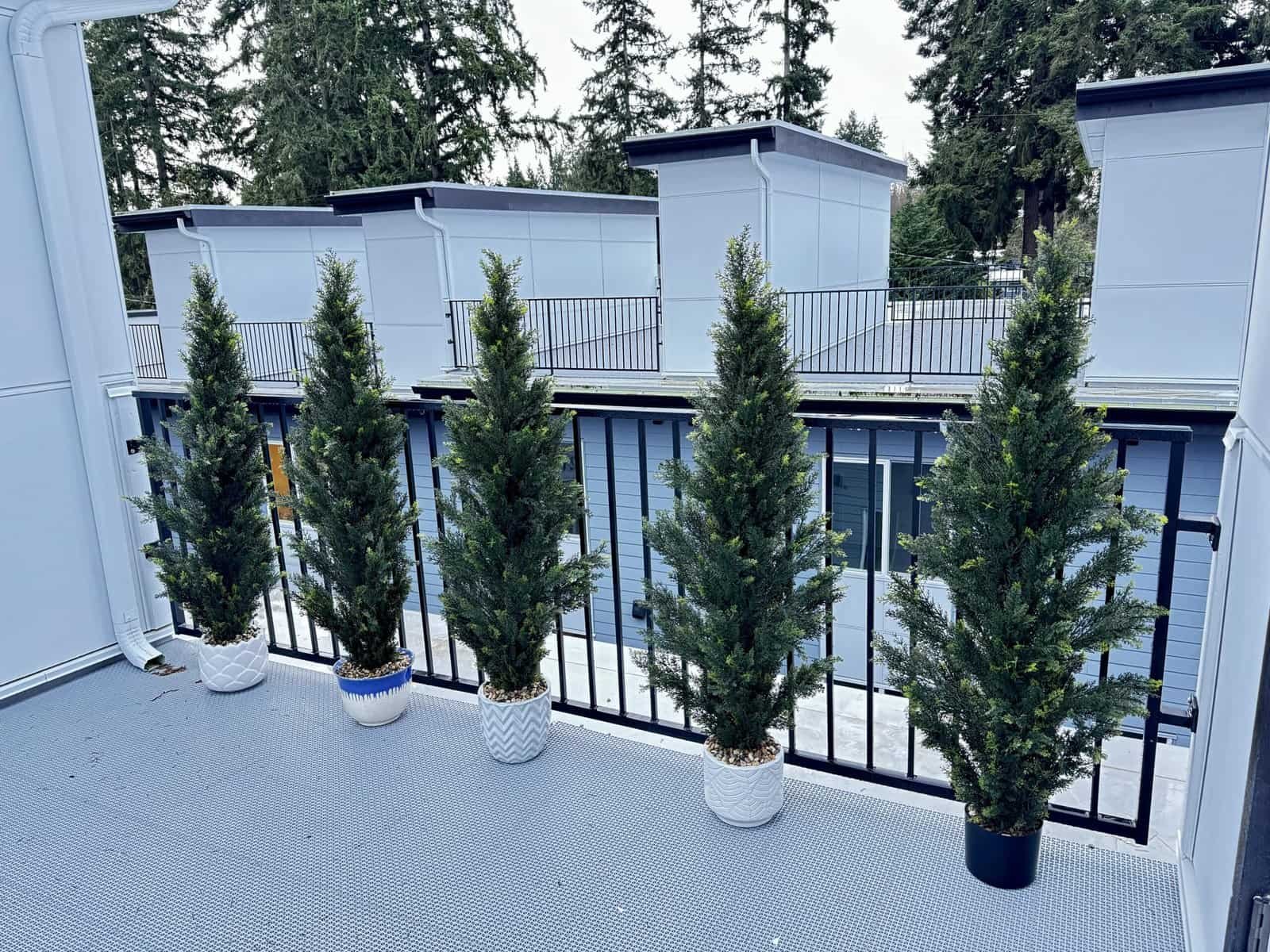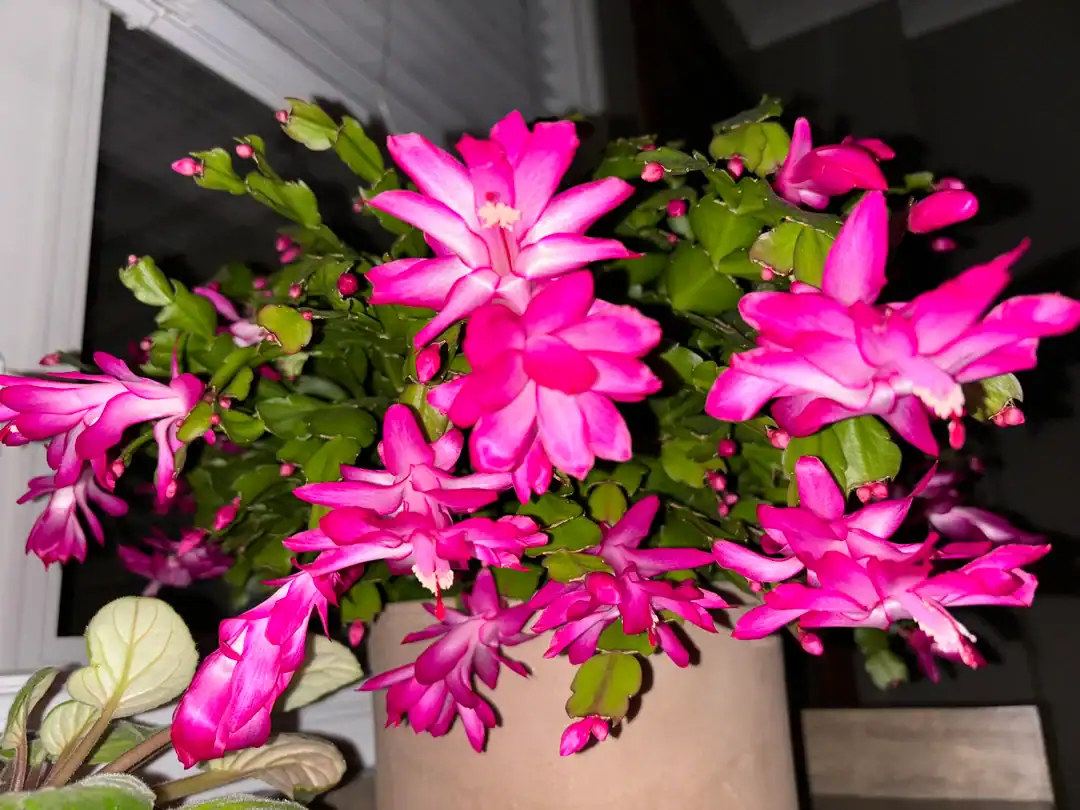
Heyyyyyyy
It can be tough to make a front yard feel welcoming without the right plants. Finding something that’s easy to care for and still beautiful is not always simple. After some research and experience in my own garden, I discovered a few standouts.
These 10 best front yard plants can truly boost curb appeal and even add value to your home!
Quick Reference:
- Enhance curb appeal with low-maintenance plants
- Offer seasonal variations in color and texture
- Add potential home value
Contents
Oakleaf Hydrangeas

Oakleaf Hydrangeas make any yard look amazing. This deciduous shrub works year-round in a garden. In spring, the large oak-shaped leaves stand out. By summer, panicle-shaped blooms appear and add charm.
Fall brings deep burgundy foliage for seasonal color. In winter, its peeling cinnamon bark stays lovely. It needs little upkeep and no pruning. I love how it boosts curb appeal without much work!
Care Tips:
- Plant in well-draining soil.
- Water moderately during dry spells.
- Provide full sun to partial shade.
- Prune only when needed.
Oakleaf Hydrangea Varieties and Benefits
Many oakleaf hydrangeas come in different types. For example, ‘Alice’ grows 5-8 feet tall with large, arching blooms. ‘Little Honey’ stays small and shows golden leaves that turn bronze. ‘Queen of Hearts’ has a broad form and blooms that shift from white to deep pink.
These shrubs do well in gardens because they need little care. Their oak-like leaves change to warm hues in fall, which adds extra beauty and charm to a front yard.
Azaleas

Azaleas bring bold color to any yard. Their blooms come in pink, red, orange, purple, and even white. Many stay evergreen all year, which adds beauty even in winter.
They bloom first in spring but some types flower again later. These shrubs thrive in partial shade and are perfect under trees or near the house. I find them easy to care for because they adapt well and don’t need much attention.
They work great for anyone who loves low-maintenance landscaping with lots of curb appeal!
Care Tips:
- Plant in acidic, well-draining soil.
- Keep the soil consistently moist.
- Provide partial shade for best growth.
- Prune lightly after flowering.
Azalea Varieties and Garden Performance
Azaleas include types like Rhododendron canescens and Rhododendron viscosum. One shows pink blooms, while the other displays white to pale pink flowers. The Missouri Botanical Garden even houses a large collection of these shrubs.
They need acid, moist soil and partial shade to thrive well. These shrubs work nicely in borders or woodland gardens, and they give a burst of color that many enjoy.
Coral Bells

Coral Bells are perfect for adding color to your yard. The foliage comes in shades of red, bronze, and purple. Most varieties stay evergreen too, which means year-round beauty with little effort.
The mounding habit makes them great for edging borders or mixing with shrubs. They grow well in shade and filtered sunlight. In late spring to early summer, tall spikes bloom with bell-shaped flowers in white, pink, or deep red.
Care Tips:
- Plant in rich, well-draining soil.
- Water regularly during dry periods.
- Maintain some shade to prevent leaf burn.
- Add mulch to retain moisture.
Coral Bells Detailed Profile
Coral Bells, known as Heuchera sanguinea, form a tight mound and grow to about 8-10 inches tall. Their leaves come in striking shades of red, bronze, and purple. This blend of colors makes them a lovely accent in any garden.
They work well with other shade-loving plants and are ideal for borders. The bell-shaped flowers that appear in late spring to early summer further boost their charm.
Viburnum

Viburnum adds beauty and structure to any yard. Its vibrant foliage changes with the seasons, creating year-round appeal. Some varieties produce clusters of white flowers that look stunning in spring or fall.
Others, like Korean Spice Viburnum, offer a delightful fragrance in spring.
Colorful berries attract birds which boost biodiversity in your garden. Many types are drought-tolerant once they settle in and resist pests and diseases. It’s an easy-care shrub that fits perfectly into landscaping plans while supporting wildlife habitats.
Care Tips:
- Choose nutrient-rich, well-draining soil.
- Water evenly during the growing season.
- Prune after blooming to maintain shape.
- Provide full sun to partial shade as needed.
Viburnum Varieties Detailed
Viburnums show many shapes and sizes. Some, like Viburnum dentatum ‘Christom’ BLUE MUFFIN, bloom with small white flowers in May. Others, like Viburnum lantana ‘Mohican’, add height and substance to a garden.
These shrubs attract birds with their berries and display changing leaves that boost curb appeal all year round. Their varied forms make them a versatile choice for many gardens.
Perennial Geranium

Perennial geraniums are hardy and low-maintenance. They bloom from late spring to fall, filling the yard with colorful flowers. The foliage has a soft texture that adds charm to any landscape design.
These plants resist pests and adapt to different soils. Once established, they tolerate drought well. Pollinators love their nectar-rich blooms, which makes them even more appealing for front yards.
Care Tips:
- Water when the top inch of soil feels dry.
- Provide full sun or partial sun.
- Remove spent blooms to encourage new growth.
- Maintain well-draining soil.
Perennial Geranium Spotlight
The perennial geranium, often known as meadow cranesbill, offers neat violet blooms and attractive bronze purple foliage. It forms a compact mound that typically reaches only 12 inches in height, making it ideal for smaller spaces.
This plant is a good pick for front yard beds as it handles drought well once settled. Its soft texture and vibrant flowers add a welcoming touch to any landscape.
Drift Roses

Drift Roses are perfect for low-maintenance gardening. These small ornamental shrubs stay compact, growing only about 18 inches tall. They make great groundcover and fill empty spots in the front yard with bright colors.
They bloom nonstop from spring to the first frost. It feels like they never take a break! Plus, their disease resistance means less worry about keeping them healthy. I love how they mix beauty with ease, boosting curb appeal without much effort.
Care Tips:
- Plant in a spot with good air circulation.
- Use well-draining soil.
- Water moderately, especially during dry spells.
- Prune lightly to keep the shape compact.
Drift Roses: Features and Advantages
Drift Roses come from a mix of full-size and miniature roses. They grow only about 18 inches tall and offer blooms from spring until frost. Their strong resistance to disease makes them a favorite among gardeners.
These roses are great for small gardens and borders. Their compact size and continuous blooming bring a burst of color with little effort.
Japanese Maples

Japanese Maples bring elegance to any front yard. Their colorful spring growth, leafy summer canopy, and striking fall colors make them stand out. These compact trees fit perfectly in small spaces or near entryways.
I like that they grow slowly and need little pruning. Some have tall arching branches; others stay smaller for tighter spots. They add beauty with their ornamental foliage while staying low-maintenance for busy gardeners like me!
Care Tips:
- Plant in a sheltered area with partial shade.
- Use rich, acidic, and well-draining soil.
- Water regularly during dry periods.
- Prune in late winter to maintain a pleasing shape.
Japanese Maple Care and Beauty
Japanese Maples, or Acer palmatum, are loved for their striking leaf colors. They can grow up to 25 feet tall but often remain compact in yards. Their leaves turn bright shades in the fall to create a lovely scene.
These trees thrive in moist, rich, and well-draining soil. Partial shade is best in hot weather to protect their delicate leaves.
Boxwood

Boxwood is a timeless choice for landscaping. Its dense evergreen foliage adds instant curb appeal. I use it to frame entryways, line pathways, and define garden beds. It thrives in many climates and soil types, making it easy to grow almost anywhere.
It’s also fun to shape boxwood into hedges or topiaries. Pruning keeps it neat and healthy with little effort on my part. This plant resists pests and diseases too, which saves me time and stress during maintenance.
Care Tips:
- Plant in well-draining soil.
- Water consistently during dry periods.
- Prune to maintain a uniform shape.
- Fertilize in early spring for better growth.
Boxwood Varieties and Garden Uses
Boxwoods have been a garden favorite for many years. The Ruth Palmer Blanke Boxwood Garden at Missouri Botanical Garden shows 60 unique varieties that offer a neat, green look. They work well for hedges and formal garden borders.
You can trim them into lovely topiaries or keep them as natural screens. Their compact and dense growth makes them an excellent choice for framing walkways and entryways.
Native Ornamental Grasses

Native ornamental grasses bring texture and grace to a yard. They sway in the breeze, adding movement that feels alive. Many come with feathery plumes or seed heads, making them eye-catching focal points.
I like how they vary in height, colors, and forms; it makes designing fun and personal.
These grasses are easy to care for and fit any landscape design. They work well as borders or even privacy screens. Native plants also boost biodiversity by supporting local wildlife like birds and insects.
Plus, they thrive all year round with minimal maintenance needed!
Care Tips:
- Plant in full sun with natural drainage.
- Water during dry spells.
- Trim dead foliage in early spring.
- Apply organic mulch to help retain moisture.
Native Ornamental Grasses in Detail
Native ornamental grasses include species like Bouteloua gracilis and Panicum virgatum, which add soft texture and natural movement to a yard. Their forms and heights vary, giving each landscape a unique look.
These grasses are low maintenance and do well in full sun. They can also boost garden life by attracting birds and beneficial insects.
Flowering Hedges

Flowering hedges add beauty and privacy to a yard. They bloom throughout the year, offering fresh color in every season. Lilacs, viburnums, hydrangeas, and mock oranges are great choices for their bright flowers and sweet scents.
Summersweet and Rose of Sharon also stand out with their lovely blooms.
Evergreen flowering hedges like Chamaecyparis bring year-round charm with their rich colors and textures. These hedges work well as living fences or property boundaries while boosting curb appeal.
They’re versatile, low-maintenance plants that make landscaping easy. I love how they can line walkways or create cozy outdoor spaces without much effort!
Care Tips:
- Plant in balanced, well-draining soil.
- Water regularly during establishment.
- Prune after flowering to promote dense growth.
- Inspect for pests and manage as needed.
Flowering Hedges Enhanced Details
Flowering hedges include shrubs like hydrangeas and viburnums that bring bright blooms and extra color to a yard. They enhance privacy and offer a natural screen when planted in rows.
These hedges are easy to maintain. A good trim after flowering helps them grow full and lush, making them a smart choice for any landscape.
Regional & Climate Considerations
Gardeners in different regions face unique challenges. Local climate affects plant growth. Soil type and seasonal shifts matter. Check your local guidelines. Use plants that suit your area.
- Review your local planting zone.
- Adjust watering needs based on weather.
- Keep an eye on frost dates and seasonal changes.
Unique Landscaping Ideas
Mix plants in creative ways for a striking yard. Pair contrasting textures and colors. Use varying heights to add depth.
- Pair Oakleaf Hydrangeas with Azaleas for a layered look.
- Combine Coral Bells with Japanese Maples for varied foliage.
- Frame walkways with Boxwood and Native Ornamental Grasses.
- Create a border with Flowering Hedges for privacy and color.
Conclusion
I hope this list inspires your next gardening project. These plants can boost curb appeal, improve outdoor aesthetics, and even add value to your home. Happy planting!
Disclaimer: The plant selections were based on personal gardening practice, research, and verified information. The list reflects years of observation of plant behavior, soil compatibility, and seasonal performance. This content is informational and does not substitute professional gardening advice.
The tips are based on careful research and personal observation.






